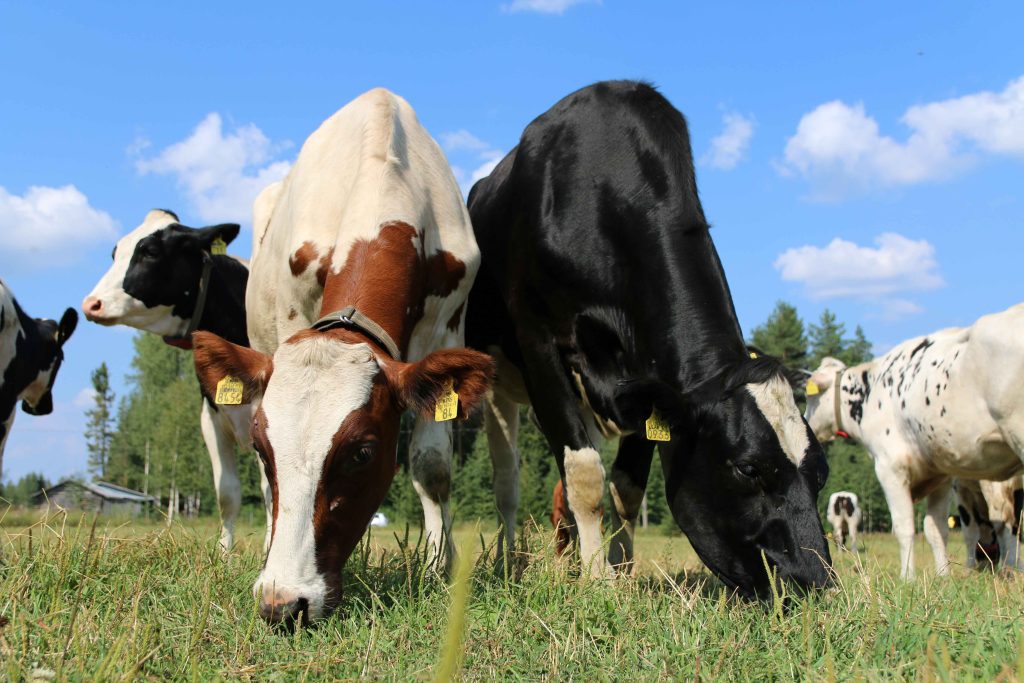Biogas has emerged as a key solution for advancing energy self-sufficiency and the circular economy. Farmers play a crucial role in this transition – not only as suppliers of feedstock and users of digestate, but also as active participants from the planning stages of biogas plants. Farmer-owned biogas plants or farmer participation in centralized facilities offer opportunities to pool local resources and strengthen the vitality of rural areas.
Sharing economy is circular economy
The Sustainable Biogas project (2020–2022), a collaboration between Turku University of Applied Sciences and the ELY Centre, examined circular economy business models in the biogas sector in Southwest Finland and Satakunta. As part of the project, a survey was conducted among biogas plants. Among the nine respondents, farms were identified as the most important cooperation partners.
One of the farmers’ key roles in biogas plants is producing biomass for energy use and utilizing digestate as fertilizer. For biogas production to be profitable and continuous, it is important to consider farmers’ perspectives already in the planning phase, as sustainable biogas production hinges on effective nutrient management (Luostarinen et al. 2023).

Cow manure is utilized in biogas production
Biogas plants can have various types of owners, all of whom play essential roles in plant operations. Shared ownership models represent a form of the sharing economy, which is a central component of the circular economy. This model enables participation based on available resources. Farmers can also be co-owners in jointly owned plants, which strengthens their role in advancing circular practices.
Farmers are interested – information and collaboration are the key
Several theses have explored how farmers view circular economy measures and biogas plant ownership. Circular economy practices in agriculture include diverse crop rotations, shared machinery use, farm by-product recycling, nitrogen-fixing crops, recycled fertilizers, and renewable energy such as biogas.
According to Eveliina Kuuskoski’s thesis, most farmers in the MTK Satakunta area view circular economy practices positively. However, a lack of information and financial uncertainty pose challenges to implementation.
In Mira Kukkola’s thesis, farmers in the Kaustinen region expressed interest in biogas plant participation, with half showing willingness to become owners. Shared ownership with local entrepreneurs was especially emphasized. Most respondents were also interested in supplying biomass to the plant. This study also highlighted farmers’ need for more information and training on the topic.
Case: Pohjois-Suomen Biokaasu Oy
Located in Ranua, PS Biokaasu Oy is a successful example of cooperation among farms – the initiative for the plant came directly from the farmers themselves. The plant is owned by 21 farms from Ranua, Pudasjärvi, and Simo, making it the largest farmer-owned biogas plant in Finland. The total investment was €6.3 million, of which 65% was covered by state aid.
The plant is expected to begin operations in summer 2025, with an annual energy production potential of around 7 GWh. Feedstock includes slurry and surplus silage from the farms, which will be converted into biogas for transport use. Nutrients are returned to the local cycle through the use of digestate as fertilizer on the farms.
Cooperation among farmers has been essential to realizing the Ranua biogas plant. This example shows how local collaboration and mutual trust are key to the success of jointly owned facilities.
How to strengthen collaboration between stakeholders?
- Increase knowledge: Enhance farmers’ understanding of the circular economy, biogas plant profitability, and collaboration opportunities.
- Identify local partners: Map regional actors and by-products that can support biogas production and the circular economy.
- Municipalities as enablers: Municipalities can promote shared biogas plants by connecting interested parties and serving as facilitators between stakeholders.
Theses show that financial risk creates uncertainty for farmers when considering circular economy investments. On the other hand, financial gain is a major motivator for participation in biogas plants. A jointly owned plant or a centralized facility involving multiple sectors may be a suitable solution.
The sharing economy model distributes investment costs, risks, and profits across multiple actors, allowing each to participate according to their resources and capacity. Through collaboration, expertise can also be shared and expanded, improving the profitability and long-term sustainability of the biogas plant.
References
Kaasalainen, S. & Sirkiä, J. 2021. Biokaasualan kiertotalouden liiketoimintamallit
Luostarinen, S., Tampio, E., Laakso, J., Rasi, S., Lehtoranta, S. & Valve, H., 2023. Biokaasutuotannon kestävyys varmistettava. Policy Brief 2023:11.
Kuuskoski, E. 2024. Maatalousyrittäjän kiertotaloustoimet
Kukkola, M. 2023. Kaustisen seutukunnan maatalousyrittäjien suhtautuminen verkostomaiseen biokaasun tuotantoon
Business Ranua, 2024. Ranualle rakennetaan biokaasulaitos
Demeca, 2025. Pohjois-Suomen Biokaasu Oy – Maatilojen yhteistyöllä kohti biokaasun tuotantoa